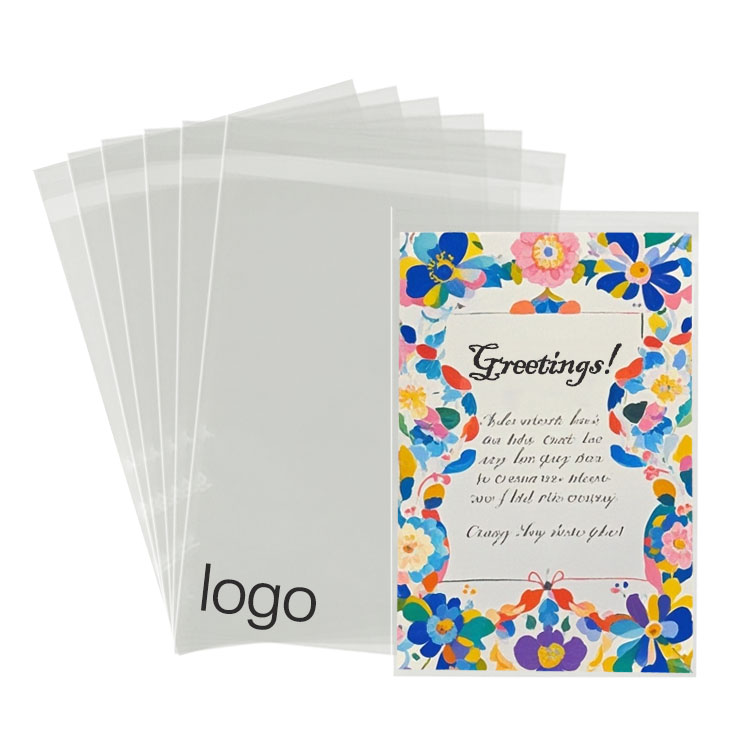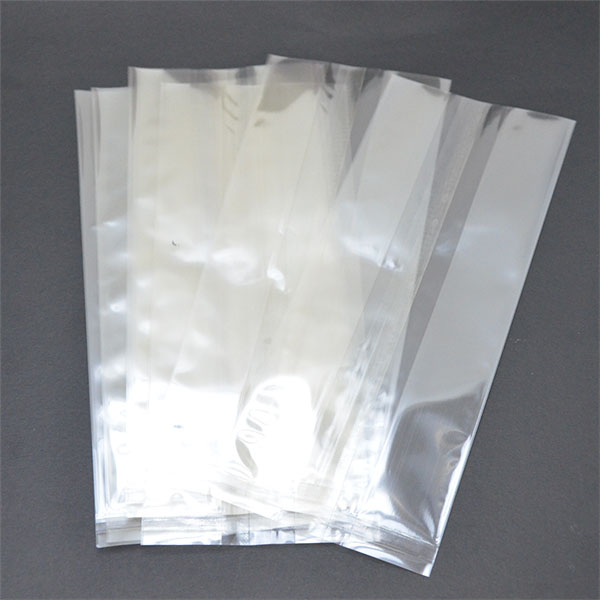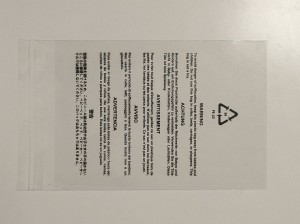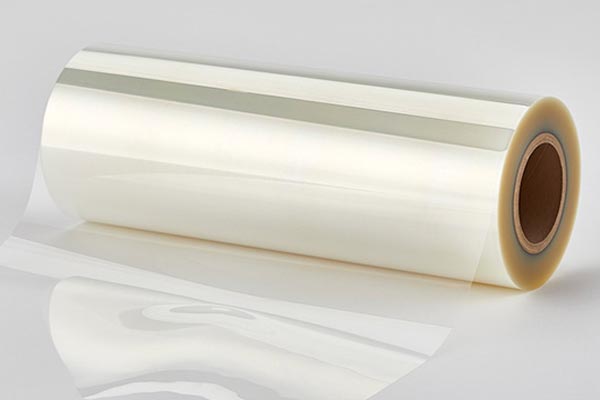When it comes to packaging greeting cards, choosing the right material is crucial for both protection and sustainability.
Clear plastic sleeves are a popular choice, especially those made from eco friendly materials, but what are greeting card sleeves wholesale made of, and how do you decide which material is best for your needs?
In this article, we'll explore the differences between polylactic acid (PLA) and cellophane, two popular biodegradable materials used for greeting card sleeves.
Discover PLA: The Industrial Compostable Option
PLA, or polylactic acid, is a biodegradable polymer derived from renewable resources such as cornstarch or sugarcane.
PLA film is commonly used in the packaging industry due to its high transparency, biodegradability, and water resistance.
It is a popular choice for sustainable packaging solutions and can be made into various bag types, including three-side-seal bags, accordion bags, and T-bags.

PLA card sleeves are eco-friendly alternatives to traditional plastics, offering several key benefits.
Biodegradable and Compostable
PLA can be broken down into harmless lactic acid under industrial composting conditions, making it a sustainable choice for environmentally conscious businesses.
Water-Resistant
PLA films are water-resistant, protecting your greeting cards from moisture damage.
High Transparency
With its clear and crystal appearance, PLA allows the beauty of your cards to shine through.
Mechanical Properties
PLA has good mechanical properties, which allow it to be processed using conventional plastic processing techniques.
Customizable
PLA sleeves can be printed with logos and designs, adding a personal touch to your packaging.
However, PLA has some limitations relatively.
It is not suitable for high-temperature applications and may degrade if exposed to prolonged heat.
This makes it ideal for normal storage and display conditions but not for environments where high heat is a factor.
Explore Cellophane: The Fully Compostable Alternative
Cellophane is another popular material for greeting card sleeves.
Cellophane film is commonly used in the packaging industry for its transparency, compostability, and heat resistance and is a popular choice for packaging applications where environmental impact is a priority.

Card cellophane sleeves are known for its unique properties:
100% Home Compostable
Made from plant fibers, cellophane is fully compostable at home, making it an excellent choice for those looking to minimize environmental impact.
Heat-Resistant
Unlike PLA, cellophane can withstand higher temperatures without degrading.
Breathable
Cellophane allows some air exchange, which can be beneficial for certain types of cards that need to "breathe" over time
However, cellophane is not waterproof, which means it may not be the best choice for protecting cards from moisture. This makes it more suitable for indoor use and environments where water exposure is minimal.
How to Choose the Right Material for Your Greeting Card Sleeves
Environment Impact
Both materials are eco-friendly, but PLA requires industrial composting facilities to break down, while cellophane can be composted at home.
Protection Needs
If moisture protection is a priority, PLA is the better choice. However, if you need a material that can withstand higher temperatures, cellophane is the way to go.
Customization
Both materials can be customized with logos and designs, allowing you to brand your packaging effectively.
Environment Needs
If your cards will be displayed in a store or shipped in conditions where moisture is a concern, PLA is a good choice. For cards that will be stored or displayed in a dry environment, cellophane can be a more sustainable option.


How to Store and Maintain PLA and Cellophane Bags?
Storing PLA Bags
PLA (Polylactic Acid) bags are biodegradable and sensitive to environmental conditions. To maintain these biodegradable PLA packaging's integrity:
Temperature & Humidity
Store them in a cool, dry place with a temperature range of 10–25°C (50–77°F) and relative humidity below 50% to prevent premature degradation.
Moisture Control
PLA is moisture-sensitive and can become brittle when exposed to humidity. Sealing the bags in airtight containers with desiccants can help maintain their condition.
Shelf Life
Properly stored PLA bags can last up to 1–2 years, but they are best used within 6–12 months after opening to ensure optimal flexibility and strength.
Storing Cellophane Bags
Cellophane wrap, made from regenerated cellulose, has unique breathability properties that allow limited moisture exchange.
Temperature & Light Exposure
Keep cellophane bags in a cool, shaded area, ideally at room temperature (15–25°C / 59–77°F). Prolonged exposure to direct sunlight or heat can cause yellowing and brittleness.
Humidity Considerations
Unlike PLA, cellophane is not highly sensitive to moisture, but excessive humidity (above 70%) can cause it to soften or warp over time.
Shelf Life
With proper storage, cellophane bags can remain in good condition for 2–3 years, though handling and environmental factors can affect longevity.

YITO is a dedicated provider of eco-friendly packaging solutions, specializing in high-quality PLA cellophane card sleeves and other packaging. We are committed to helping businesses overcome their packaging challenges while aligning with environmental goals.
Choose YITO to enhance your brand's sustainability profile and provide your customers with packaging that is as responsible as it is functional.
Related Products
Post time: Mar-31-2025

